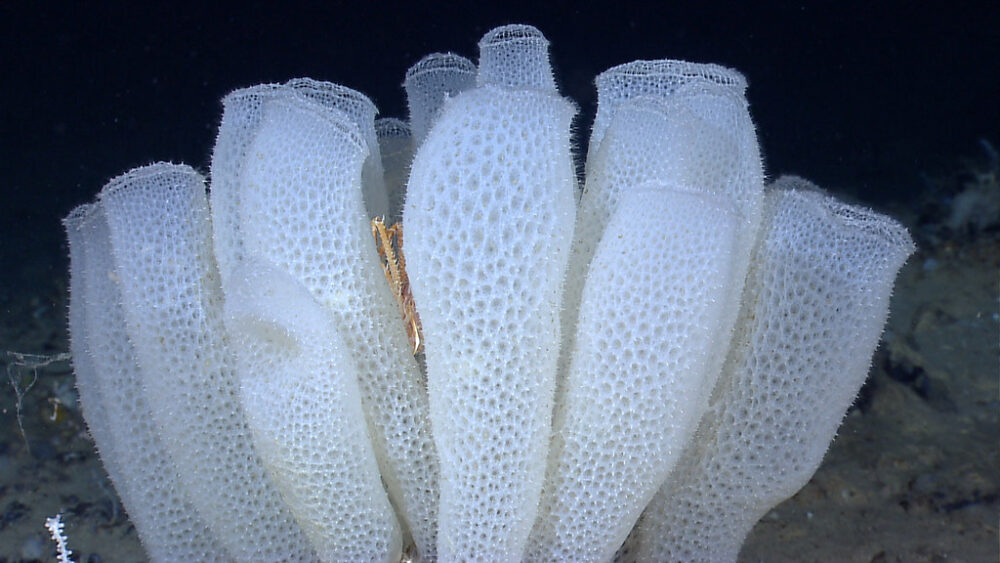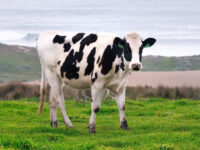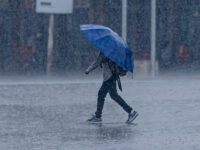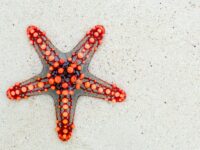Neck craning, you gaze up at an impossibly tall building, its windows shimmery and surreal against the bright sky. You spin around, eyes focused upward, and realize that all the buildings around you are taller than ever before achieved by structural engineers. What you perceive as a curious weightlessness to the building contrasts the sturdiness promised by a towering network of beams and columns. Funny enough, the inspiration for these ultra-efficient skyscrapers, imagined by engineers and architects around the world, comes not from the terrestrial nor the aerial realm that the buildings occupy, but from the dark depths of the ocean floor. As experts seek inspiration for stronger, more efficient structural designs, they often turn to nature, and newly realized qualities of glass sea sponges have inspired a re-envisioning of structural potential.
Known as Venus’ Flower Basket (Euplectella aspergillum), this particular species of deep sea sponge belongs to the hexactinellid group of sponges, characterized by a silica-based, glass skeleton. The skeleton is composed of lattices and an array of criss-crossing support systems, which are startlingly comparable to man-made structures. In order to withstand the immense pressures experienced on the ocean floor, the skeleton has evolved over millions of years to have a high strength-to-weight ratio and efficient force distribution through skeletal symmetry.
Experts across universities continue to collaboratively analyze the structural strength of glass sponges, with a significant portion of the research centering around the Wyss Institute for Biologically Inspired Engineering and John A. Paulson School of Engineering and Applied Sciences (SEAS) at Harvard University. Among many others, Joanna Aizenberg, PhD, James Weaver, PhD, and Matheus Fernandes, PhD have tested how the skeletal configurations behave under loading conditions, particularly evaluating buckle and fracture.
Lattices and an array of criss-crossing support systems form this skeleton and are startlingly comparable to man-made structures.
Such tests focus on the main load-bearing members of the skeleton, which are column-like and beam-like connectors known as spicules. Diagonal spicules interlace between vertical and horizontal spicules, creating a square lattice or multilayered checkerboard of skeletal members. This lattice forms the contours of the often tubular or rounded sponges. As chronicled in Nature Materials, researchers modeled and compared the diagonally reinforced sponge lattice to traditional lattices (both diagonally reinforced and non-reinforced) used in man-made structures. The models had identical total mass and, as such, the experts discovered that the lattice of spicules was 20 percent stronger without the addition of extra material. Additional bracing, connection material, and stronger but heavier member material might increase the overall strength of a system, but they may also increase the weight and cost. The strength-to-weight ratio of the sponges is higher than conventional structural systems, requiring the greatest force to buckle the lattice but remaining remarkably light and theoretically cost-effective.
Not only does the configuration of the spicules increase the efficiency of the structural design, but the actual composition and internal structure of spicules increases the strength of each member. Concentric layers of silica and silica cement form individual spicules and become progressively thinner toward the outer radius of each spicule. The thinner outer layers are more breakable and experience cracking first and more easily than inner layers, thus taking the brunt of any damage and limiting cracks from advancing to the core of the spicule. In this way, the expendable nature of the outer layers increases the strength of the spicule. Although today’s conventional steel and concrete beams and columns may not yet be able to mimic this exact internal structure, extrapolated lessons on forces, cracking, and increased resilience still intrigue experts.
It is important to note that the overall and internal structures of glass sponges’ spicules do not only apply to the construction of buildings, but to those of bridges, consumer products, aerospace apparatuses, and many more. Engineers, designers, and architects, among many others, are often seeking something lighter, stronger, and sleeker but still long-lasting and durable. Sea sponges may not seem like the most glamorous inspiration, but their quiet efficiency and resilience through countless millennia and environmental factors demonstrate structural proficiency we have yet to quite achieve.
Journal of the Royal Society Interface (2021). DOI: 10.1098/rsif.2021.0559
Life Sciences (2016). DOI: 10.1016/B978-0-12-800049-6.00270-5
Nature Materials (2020). DOI: 10.1038/s41563-020-0798-1






